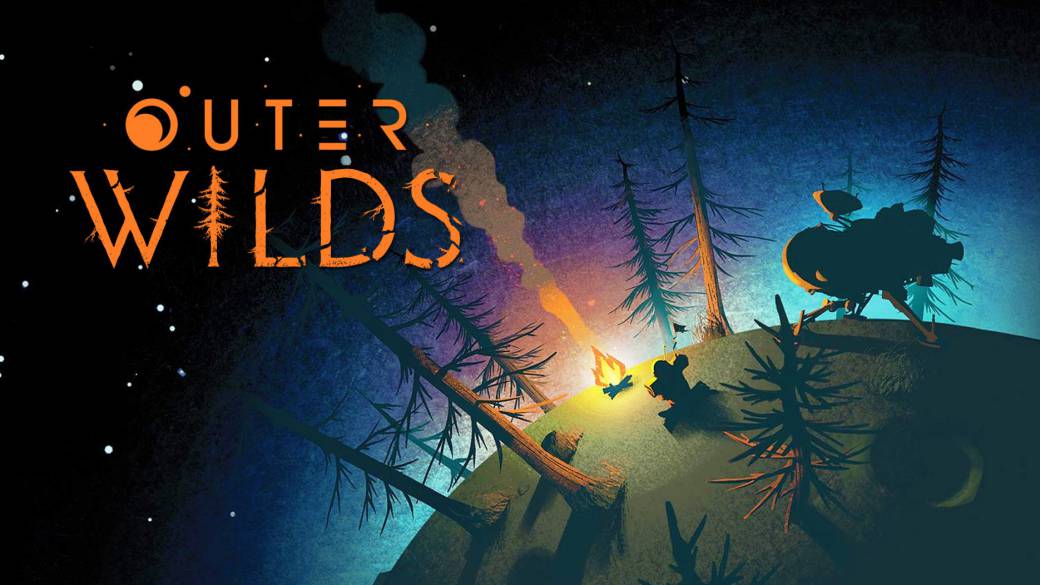
Explore Learn Go dead. Small in resources, giant in ambition, Outer Wilds reinvents space adventure and the concept of playable progression.
Let's put an assumption. One day you attend a magic show and, although over the years you have cultivated some cynicism and know perfectly well that there is a rational explanation behind each illusion, the number dazzles you. This magician is not limited to finding a card in the middle of a deck or to simulate that cuts someone into a box. Their tricks are new, different from the ones you've seen so far, so the process of understanding their nature is fascinating and eclipses the idea that there are little tricks in action. You might think of them back home, but at the moment, sitting there, the initial revelation hits your cynicism because you still don't have the kind of mechanisms necessary to process and counteract that information. It's like going back to childhood, when magic did seem like magic. Something that will obviously be ephemeral, but no less fascinating.
Before you look again at the title, yes, this is the Reviews of Outer Wilds, an adventure created by Mobius Digital and one of the great indie revelations of 2019 that we had pending for h or b. The funny thing is that if you got here without knowing anything about the game, our first recommendation is to stop reading and try it before – especially if you have free access through the Xbox Game Pass. It will sound like the most basic norm that should not be breached in an Reviews, but just as explaining each magic trick to a friend in detail reduces his / her ability to be amazed when he then goes to the show on his own, shredding a work like Outer Wilds goes against its most basic premise. Because maybe some of their individual concepts can be traced to games like No Man's Sky, Majora's Mask or Riven, but the way they converge and feed each other makes our protagonist something unique today.
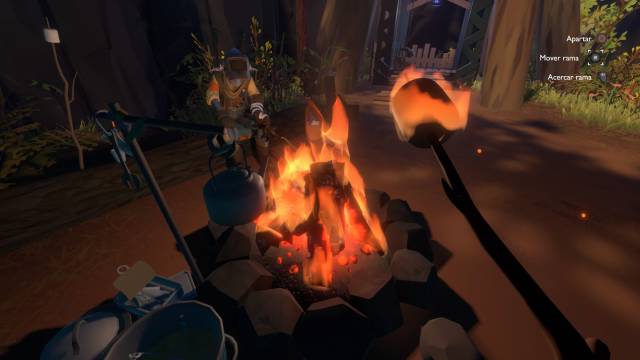
It will seem an unnecessarily cryptic way to boot. In the case of a product that in most cases will cost some money, and also has a potentially divisive nature, surely a little more information will be welcomed by those who do not want to go crazy. Posture quite reasonable. The problem is that in the case of Outer Wilds, more than in any other recent title, the discovery of this information is inextricably linked to the game's own premise. It is not a simple matter of gutting an argument that has its surprises, but it does not base its claim on discovering who the murderer is, if someone betrays us or if a travel companion dies along the way. His concept of intrigue is not the same as we normally see in other media such as cinema or literature, but one generated from its own complexities, often speechless and with the player always in the center, processing and reacting.
Journey to the Wild Outdoors
In fact, one possibility to summarize Outer Wilds is like a non-combat metroidvania where knowledge, and not the acquisition of objects or skills, is responsible for opening the locks raised by the design. As in Breath of the Wild – with which on a mechanical level it has little to do, but it does share some philosophical foundations -, access at the end opens almost immediately and the player needs the other hours to understand where he has to Go, what you have to do and why you have to do it. Information, therefore, is the main currency. In Outer Wilds there is no money or experience. We do not collect materials to build improvements, nor do we find them exploring. Like the Plateau de los Albores, the small initial village of the planet Lumbre requires a small preliminary procedure and has the way to it conversations and optional situations with a didactic value not always obvious out of context. But once we take off, things change dramatically.
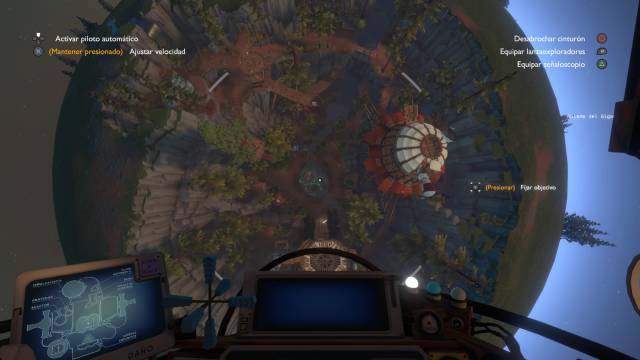
From the cozy cabin of our spacecraft we have quick and convenient access to a series of planets or other celestial bodies that, like Lumbre, orbit without pause around the Sun. The scale, despite the premise, is quite concentrated (the distance between them it is measured in a few kilometers), the fuel is not a problem and the autopilot function leaves us in the orbit of the selected target so that we can then start a manual landing. This is where some complication may arise, since graciously posing a mobile object on another mobile object – the planets not only revolve around the Sun, but also on its own axis – requires practice. The ship's parts can be damaged in the process, in which case we must go out through the hatch and repair them with a button – again, this is not about storing resources. Although it is on foot where the first real difficulties appear.
As good astronauts, we have a suit to breathe in alien atmospheres and move with agility thanks to a propulsion system, both limited by their respective oxygen and fuel meters. Their margin of use is not too strict, and they can be filled either on the ship or at other points enabled for it (the areas with trees regenerate the oxygen tank and small metal cylinders left by other explorers, the fuel tank). It is a minor pressure, but a pressure after all, that introduces a countdown in our head as we explore for something, whatever, that works as a short or long term goal. Because unlike Breath of the Wild, Outer Wilds does not set a “Ganon,” that goal that can be postponed, but not ignored. His sense of freedom not only includes order, but also motivation. The curiosity of the player is the first and most important engine of the game.
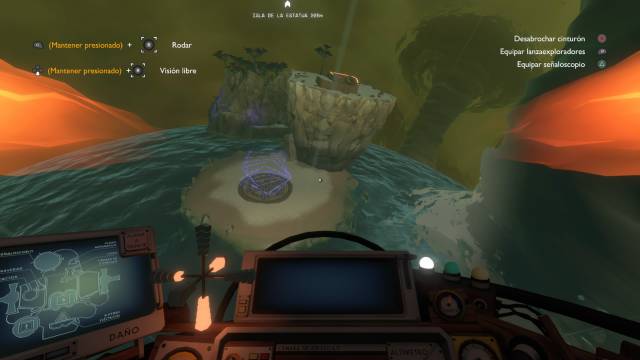
A glow and it makes PUM!
From here, each person will live a substantially different experience even without resorting to procedural constructions. Some will be attracted to Rocaterra, the moon that orbits next to our home planet, and will chat with one of the previous astronauts who paved the way for the space race. Others will end up in one of the Twin Hourglass planets, which float in tandem while one fills the fissures of the other through a large stream of sediments that furrow the space without spreading. Others may be surprised by the ocean with large tornadoes that momentarily take us and their own islands out of the atmosphere of the Giant's Abyss. But everyone, including those who delay their departure from Lumbre between practice exercises, readings in the museum or hiding games with local children, will come together at the same point when they reach the first half hour of play. Because it is then, after finishing a melancholic melody that acts as an omen, when the Sun explodes in a supernova and consumes the entire galaxy.
It goes without saying that this is not the end of Outer Wilds. If this is the real start, it serves to introduce one of its main mechanics: the process to obtain the launch codes, in addition to a way to familiarize ourselves with the world and its premise from the safety of the firm ground, also provides an excuse for Having contact with the Nomai statue that works as a catalyst to enter a temporary loop that sends us back to relive again and again the 22 minutes prior to the destruction of the galaxy. This, of course, is where we can think of the other Zelda mentioned above, but again without a clear objective to point with the finger. As far as we can understand, the explosion of the Sun is a consequence of a chemical reaction, not the product of the spell of some villain, so Outer Wilds is unmarked from the logic prevailing in the other video games and forces us to return to space with the intention of learning. To understand your logic.
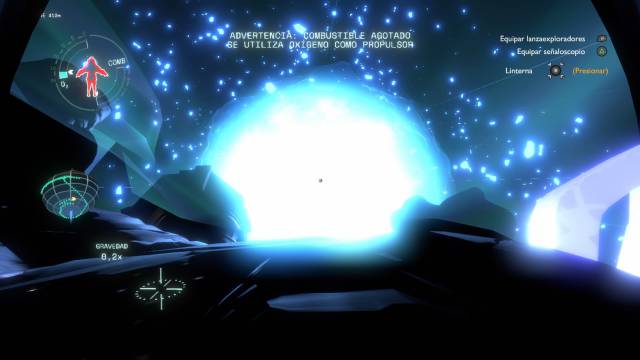
This brings us back to the concept of knowledge and one of the popular Socratic paradoxes, because now we know much more about the world – we know how to travel to other planets, we know that the Sun is about to explode, we know that a race called nomai has a technology so advanced that it manipulates time – but at the same time we also have many more doubts because we are more aware of our ignorance. The willingness of the player to get involved in a trip as intellectual as physical is absolutely vital in a work that in terms of science fiction shares much more with 2001: A Space Odyssey than with Star Wars despite the fanciful cares that the design or the tone. Outer Wilds offers a long experience (completing it can take more than 10 hours), fascinating, but also demanding, occasionally obtuse, which must be faced more as a graphic adventure of the nineties than as a modern action game.
Lost in time, found in space
The most important question below is how this detective work works for practical purposes, and for the sake of clarity we will divide it into two cores: exploration and research. Both are intertwined and would not work without each other, but can be delimited on the one hand as the physical process of moving around the planets, overcoming challenges posed by their geographies and natural phenomena thanks to observation, oxygen and fuel management, and use of tools such as a signal scope that detects waves of a certain frequency, or a scout launcher that triggers a device to detect hazards, take remote photos and illuminate dark rooms; and on the other, as the mental process of tying ends using the information collected from the Nomai writings thanks to our practical translator. The key data of these messages, ranging from scientific hypotheses to more everyday conversations, are automatically accumulated and organized in a database that, conveniently, is the only thing that does not restart after each cycle.
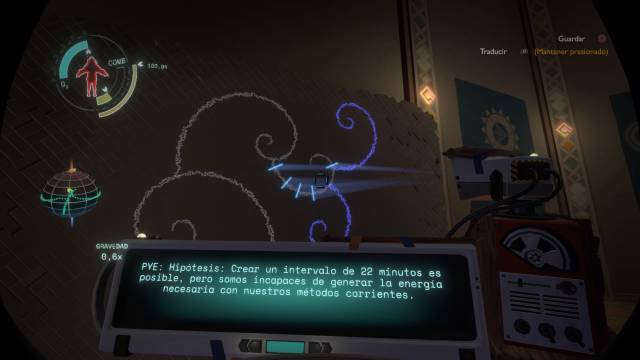
The (playable) loop within the (temporary) loop, therefore, consists of planning departures from Lumbre to other points in the galaxy – or of Lumbre itself – and breaking through rugged plains, labyrinthine caves and abandoned buildings to find clues that shed a little more light and / or point us in another direction. The methodology as such is simple, but the fact that each piece is just a fraction of the puzzle, that all of them can be found in any imaginable order, and that they are often surrounded by creative situations, which give a new twist to the shape to understand the functioning of this universe, get the journey to remain stimulating through the hours. Here we could cite another Zelda, The Wind Waker, which had in its quest for the Triforce both questionable decisions and several of the best adventurous flashes – think of the elusive ghost ship – but Outer Wilds goes much further pushing ideas similar to his or those of the Mario Galaxy orbital platform.
While at the superficial level it fits into the field of narrative games, linking the progression to virtual reinterpretations of physical rules such as the laws of motion, gravity or quantum mechanics also make it a rich playable experience. In addition, the 22-minute cycles not only add time trial pressure, they function as an internal calendar that alters the scenarios and cause some locations to be accessible only at the beginning, at the end, or perhaps in small intermediate windows of each time loop. Although death by supernova is inevitable, cycles can also end if we are trapped in a city gradually submerged by sand, or if the ground under our feet collapses into a black hole that drags us into space with an oxygen tank almost Exhausted. Even without fighting or bosses, in Outer Wilds there is room for error and frustration, but they easily counteract with experience and sometimes lead to discoveries that we were not even looking for consciously.
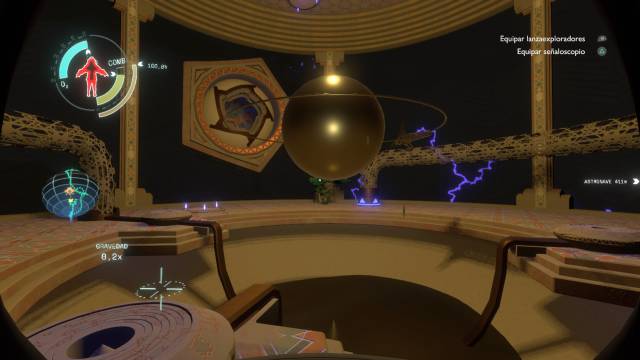
At the end of all things
However, despite all this, and the introduction of this same text, Outer Wilds is still the kind of game that should be recommended with an asterisk next to it. Space exploration here is not an excuse to kill Martians or flirt with exotic species. It is a door to a mysterious, serene and even tragic universe. It does not pursue simple spectacle or emotional manipulations, although they are often found naturally. The condensation of his ideas into technically impossible designs is a license to create a game that is first and foremost game, but also captures the beauty of the eternal dance of the planets in a vacuum, the sound of our breathing in the sepulchral silence of space ( although the soundtrack is noteworthy and effectively accentuates other moments) or the certainty that, within 22 minutes or five billion years, at some point everything around us will inevitably turn into cosmic dust.
The ability to feel that kind of vertigo and at the same time the determination to move forward and achieve something, even if it is short, before time runs out, will fully define our experience in Outer Wilds. It is a groundbreaking proposal with an execution that does it justice, although it is possible to clarify that we have played it months after the launch, after some patches, and that certain problems persist (in PS4 the game was closed a couple of times after loop restarts, although no losses). Graphically it also demonstrates its humble origins with some slowdowns or elements with a lower level of detail, although the stylized aesthetic minimizes its impact and does not prevent it from inspiring by its ambition: exploring the interior of a planet it is easy to forget that it continues to rotate, generating its own gravity and spinning around a sun that casts light and shadows in real time while heading unstoppably towards the impending cataclysm. But while it does not arrive, everything goes on, orbiting and aligning without loading screens. It is magic, even if there is a trick.
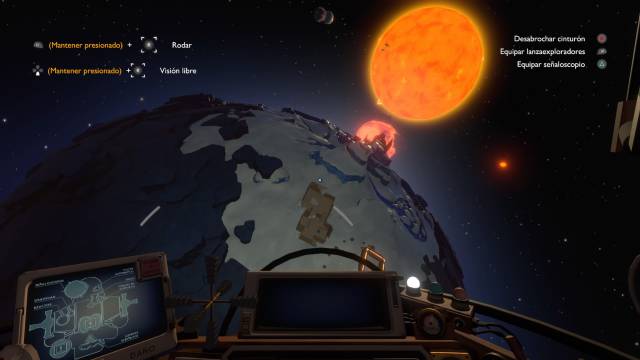
CONCLUSION
Apart from individual claims or proposals, video games as a medium are a delicate balance between science and art. After decades, they tend to ignore it, take for granted what is always there, in front of us. Just like the gravity that holds us to the ground or the terrestrial rotation that makes us alternate between day and night. But from time to time something new appears, an unknown phenomenon interrupts and invites us to take a step back to reassess what lies ahead. Strictly speaking, Outer Wilds does not create a genre or transform the industry, but it definitely has the ability to show us that there are still corners to explore if we depart from the busiest routes. It does not reject all conventions, but it does adapt very selectively those that serve to reimagine the space exploration. Your solar system defies the laws of physics, but at the same time embraces science to create unique game situations. As a mechanical experience, it has its limitations. As a narrative experience, run away from easy effects. But as a playable engineering work, it is a love letter to curiosity about the world around us and the way video games themselves work.
THE BEST
- The masterful recreation of a dynamic solar system to explore.
- The use of temporary loops and physical laws to solve situations.
- Total freedom to face goals or even skip steps.
- Increasing difficulty poses a considerable intellectual challenge.
WORST
- Little mechanical depth in the most traditional sense.
- Occasional technical problems.
Excellent
A benchmark title in its genre, which stands out above its competitors and that you will enjoy from beginning to end, surely several times. A game destined to become a classic over the years.
